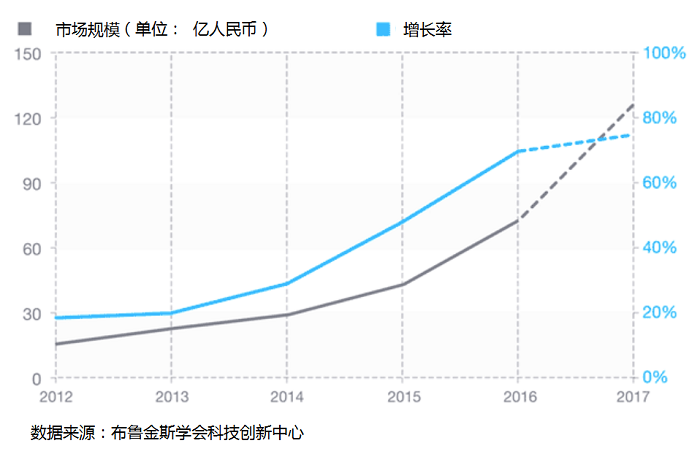China's digital technology market is almost divided by mobile technology, social media, and e-commerce. The medical and health industry is not "modern", and the degree of digitization has been relatively backward. New technologies are indeed a big challenge for the health sector, but they also bode a huge opportunity to treat patients in innovative, personalized ways.
Today, the acceptance rate of digital technology by Chinese people can be said to be quite fast. The behavior and lifestyle of a new generation of consumers are greatly affected, and the medical industry is also in the process of innovation. In the first half of 2016, private investment in the digital healthcare sector reached $1.4 billion, exceeding the investment for the full year of 2015. Below, we will elaborate on how new technologies will help solve China's health problems.
Internet Medical Market Overview
Mobile healthcare technology (mHealth) has drawn global attention, and in China it may be the greatest technological breakthrough in the new year. In 2016, China's mobile medical market is about 7 billion yuan; it is estimated that it will exceed 10 billion yuan in 2017, with a forecast growth rate of 74.5%. Mobile medical applications have proliferated in the past five years, attracting a number of startups and investors. However, most of these applications have remained at the basic functions, with only 8% of self-diagnosis and medical examination products and only 6% of medical information retrieval products. Although medical health mobile applications are still in the early stages of development, they are likely to play a major role in the market in the near future.

Mobile medical market trend
Three key points of mobile health
Quality: The effectiveness of shared medical information will be emphasized, which means that as the degree of informatization brought about by mobile medical care increases, the quality requirements for medical information are higher. For example, e-prescribing can help reduce errors in the care process (such as repeated physical exams) and improve the accuracy of medications and treatments. If the electronic prescription system is fully improved, patients can avoid expensive spending while receiving effective treatment.
Popularity: In China, it is sometimes difficult for patients to get proper medical care, and mobile health provides services that are easy to popularize, tailored, and easy to access. Patients in remote communities can obtain a preliminary diagnosis through remote video; the most active medical consumer population, ie patients between the ages of 25 and 34, almost consistently celebrates the benefits of Internet healthcare.
Save money: There is such an interesting phenomenon - more than 26% of people using mobile medical applications earn less than $2,000 a month. To analyze this phenomenon, such people may be more inclined to come to the clinic through some symptom-seeking APPs, to save the cost of medical treatment, and to study in advance before consulting a doctor.
Application Area 1: Digital Insurance Market
Although China's insurance industry has been around for hundreds of years, it was not until 1980 that the formal insurance system really emerged, and the entire industry's major take-off took place in the past 10 years. Now, China is already the third largest insurance market in the world, and with the advent of digital technology, the insurance industry is moving in a new direction.
Digital insurance services are a combination of traditional insurance practices and new technologies that combine digital distribution, big data, blockchain technology and have continued to prosper for the past five years. With these tools, the insurance industry has grown rapidly and continues to launch insurance programs that meet a variety of needs. According to the China Insurance Industry Association, China's digital insurance market in the first half of 2015 reached 81.6 billion yuan, a year-on-year increase of 260%. It is estimated that by 2020, the digital insurance market will account for 24% of all insurance, which is 910 billion yuan.
A major factor in stimulating the growth of China's mobile medical market is the need for personal insurance in addition to public insurance schemes. Data from Ernst & Young (EY) show that 93% of respondents are not satisfied with their existing insurance, and 33% of them are not used to deal with major illness savings. The government's lowering of the regulatory threshold and the introduction of tax incentives have provided a good opportunity for the development of digital insurance.
Clinical&Analytical Instruments
Microplate Incubator,Analytical Instruments,Disposable Sampling Tube Kit,Clinical Chemistry Reagents
Guangdong Widinlsa International Co.Ltd , https://www.gdwidinlsa.com